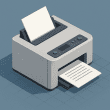Table of Contents Show
Manual accounting is not merely an operational inconvenience; it is an anchor, tethering forward-thinking organizations to outdated processes at the very moment when agility and precision define competitive advantage. With each laborious spreadsheet update and every tenuous reconciliation, the opportunity cost compounds, taxing both resources and morale. How long will businesses permit inertia to masquerade as prudence? Technology has upended the field, yet many persist, clinging to rituals that belong to a previous century. The time has arrived to contend honestly with the limitations of manual accounting – and, more importantly, to envision the untapped gains that lie beyond its abandonment.
The Inherent Limitations of Manual Accounting
Even the most diligent teams encounter errors and inefficiencies inherent to manual accounting, particularly during high-stakes activities such as SOX testing. Tedious double-entry, version confusion, and the pernicious creep of human error transform financial operations into a high-wire act where a single misstep could cascade into regulatory headaches. When critical financial controls depend on paperwork shuffling and siloed spreadsheets, the organization courts risks it cannot afford, often expending disproportionate effort just to sustain compliance. Is it any wonder, then, that audit cycles stretch interminably while value-added analysis languishes on the back burner?
Lost Productivity: The True Cost
The often-invisible drag of manual accounting is measured not just in hours lost but in opportunities missed. Consider the daily reality: talented professionals, hired for their insight and judgment, find themselves trapped in repetitive cycles of data entry, validation, and endless reconciliation. What could they achieve if unshackled from these rote tasks? Modern systems automate the grunt work, transforming accounting from a reactive chore into a proactive driver of strategy. Companies that cling to manual processes not only bleed productivity, they starve themselves of the capacity for innovation and sustained growth.
Compliance Burdens Amplified
Those stubbornly holding to manual processes inadvertently invite heightened compliance burdens. Regulatory expectations multiply, and with them, the documentation, transparency, and traceability standard-setters demand. Each manual step is a potential point of failure, a chink in the armor for both internal controls and external reporting. Rather than providing true assurance, manual records too often create audit trails riddled with ambiguity. Automated platforms, by contrast, encode compliance-by-design, rendering audits more surgical, interventions more precise, and the specter of regulatory risk far less menacing.
Unlocking Strategic Agility
Automation does not merely eliminate tedium – it catalyzes a radical transformation of the finance function. With real-time data flows and dynamic analytics, businesses move beyond backwards-looking reporting toward predictive, scenario-based decision-making. Freed from the tyranny of manual reconciliations and spreadsheet gymnastics, finance professionals can embrace high-value roles: crafting strategy, identifying opportunities, and responding to changing market realities with unprecedented speed. In this realm, agility is not a buzzword; it is the inevitable result of liberating talent from the clutches of obsolete workflows.
Conclusion
At a moment when competitive pressure leaves little room for mediocrity, refusing to move beyond manual accounting is not a gesture of conservatism – it is an act of self-sabotage. Clinging to paper trails and legacy methods in a digital age serves only to constrain possibility, hamper compliance, and suffocate growth. The future belongs to those who recognize the transformative potential of automation and seize it with vigor, consigning the habits of the past to the archives where they belong. The call to action has never been clearer: stop letting manual accounting hold you back.









